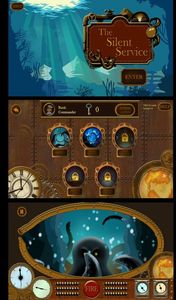ATLAS

ATLAS is no longer recruiting
Who participated?

ATLAS sought out adolescents and young adults who:
- Had an ASD diagnosis
- Were 13 years – 21 years and 11 months old
- Heard English regularly (≥ 50% of the time)
Additionally, because ATLAS required participants to play a video game, eligible participants had:
- Enough manual dexterity to do so comfortably
- A mental age that allowed them to understand the video game
- Reliable internet to play the video game
Further, because we studied auditory attention through noninvasive brain imaging (i.e., EEG), we sought participants who:
- DID NOT have a history of hearing loss
- DID NOT have a history traumatic brain injury
Although the adolescents/young adults played the video game, we also sought out families with caregivers who would be able to support their child by ensuring that they played the video game ≥ 3/week for ≥ 20 min/day for 4 weeks.
What did the study involve?

Broadly, participation in ATLAS involved visits (about 2-3) to CARE for behavioral assessments/questionnaires and EEG testing, as well as access to a video game that was designed to target auditory attention. Because ATLAS was an intervention study, we tried to see if the video game changed participants’ auditory sensitivity (as measured by the behavioral assessments/questionnaires) and/or brain responses to sounds (as measured by the EEG). In order to measure this change, we had two groups: a group where participants played the video game (the intervention group) for 4 weeks and a group where participants waited (the wait list group) to play the video game for 4 weeks. In this way, access to the game was not a matter of “if” but, rather, a matter of “when”. Group assignment was completely random.
Initially, all participants visited CARE for behavioral assessments and an EEG task. Then, families assigned to play the video game received video game training and technical support. Participants in this group were asked to play the video game for at least 3 days a week for 20 minutes each day. Participants who were assigned to the wait-list group resumed their typical daily activities for 4 weeks. After 4 weeks, all participants were asked to return to CARE to complete those same behavioral assessments and EEG task.
After this second visit, participants assigned to the wait list group were also taught to play the video game. If wait list participants and their families wanted to, they were invited to also play the video game for 4 weeks for 3 days a week for 20 minutes each day and to come back to the lab for a third visit where they would complete the same behavioral assessments and EEG task. That was optional! Wait list families may have decided not to do this.
Read more about the ATLAS intervention here!
Questions?
If you have any questions about ATLAS, please do not hesitate to reach out to ATLAS’ Project Coordinator, Rachel Hantman, at atlas@bu.edu, 617-358-4941 (call), or 617-992-6475 (call/text)!
This project was supported by the Department of Defense.